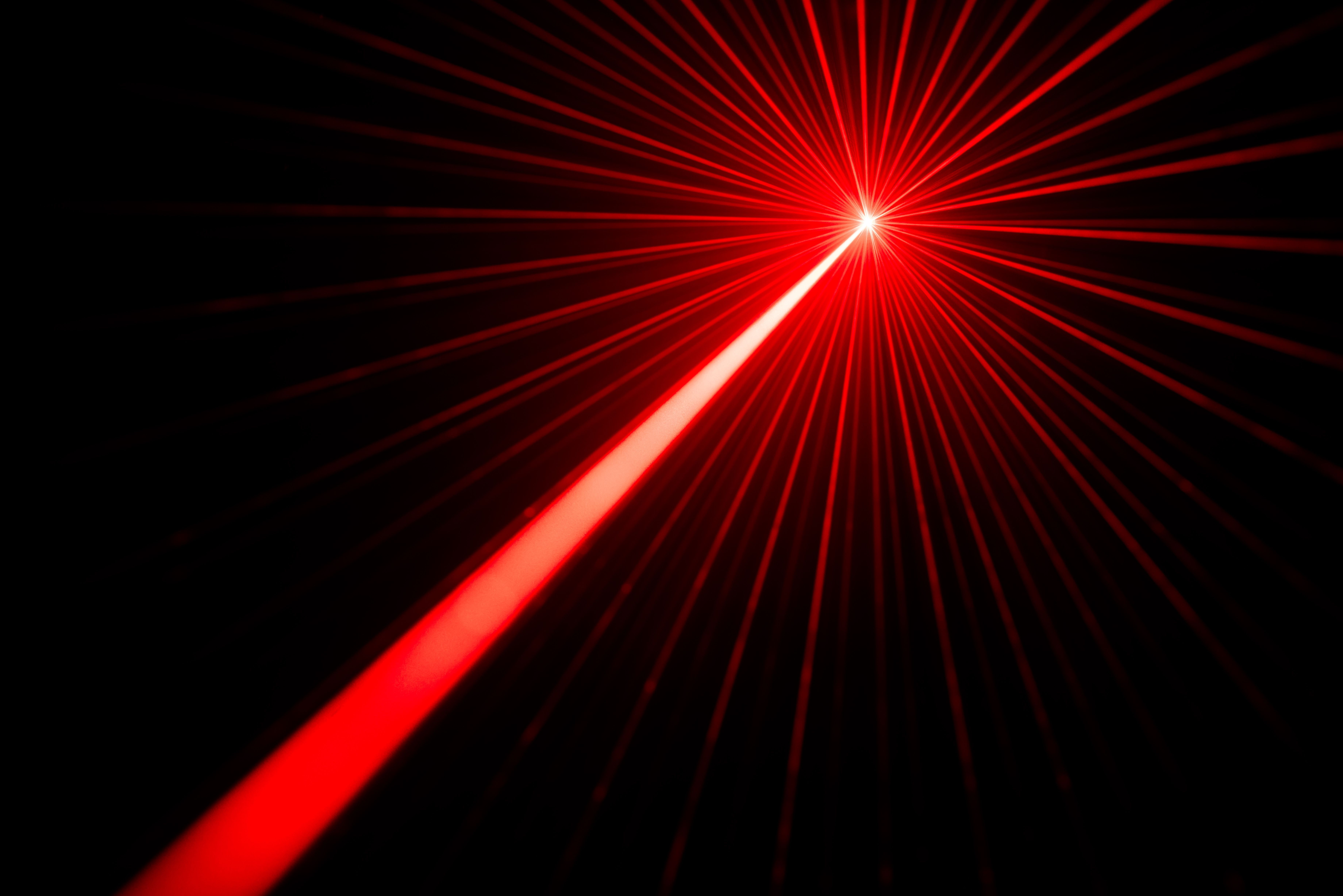New Laser Techniques Unlock Deuterium Release from Aluminum Layers
In a recent study, quadrupole mass spectrometry (QMS) was used to test the amount of deuterium atoms from aluminum layers.
A recent study led by Sasa-Alexandra Yehia-Alexe of the National Institute for Lasers, Plasma and Radiation Physics and the University of Bucharest explored the specifics of laser induced ablation (LIA) and laser induced desorption (LID) techniques using a 1053-nm laser source (1). The study was published in Spectrochimica Acta Part B: Atomic Spectroscopy (1).
Laser beam light effect | Image Credit: © donatas1205 - stock.adobe.com

The study focused on 1-μm aluminum layers created through using a high-power impulse magnetron sputtering technique on substrates with varying surface properties. The crucial aspect was the software-controlled manipulation of laser pulse energy, enabling a seamless transition from layer ablation to layer desorption (1).
The research team evaluated the quantity of the released deuterium after using quadrupole mass spectrometry (QMS) at the end of the laser-induced processes. They compared it to the results received with thermal desorption spectroscopy, which revealed an approximate total of 2.6 × 10²¹ D at/m² of deuterium in the analyzed sample (1). The mass spectra data disclosed that 85% (2.2 × 10²¹ D at/m²) and 9% (0.2 × 10²¹ D at/m²) of the total deuterium atoms were released via LIA and LID, respectively (1).
The research team also were able to determine the boundaries between the ablation and desorption processes by conducting mathematical modeling of the data. The analysis of the aluminum layer surfaces in conjunction with the substrate surface quality provided critical insights into the mechanisms governing the release of deuterium atoms via these laser-induced processes (1).
However, the biggest, and most important, conclusion was that the research team was able to confirm their findings. By using optical emission spectroscopy (OES), the research team validated that the substrate-layer interface had been reached during LIA-QMS analysis.
From advancing our understanding of materials science to potentially revolutionizing energy applications, these newly unveiled laser techniques hold promise for manipulating atomic structures within materials. This opens avenues for further research, driving innovations in energy production and material engineering.This study showcases the potential of laser technology in manipulating atomic behavior within materials.
This article was written with the help of artificial intelligence and has been edited to ensure accuracy and clarity. You can read more about our policy for using AI here.
Reference
(1) Yehia-Alexe, S.-A.; Groza, A.; Serbanescu, M.; et al. Considerations on hydrogen isotopes release from thin films by laser induced ablation and laser induced desorption techniques. Spectrochimica Acta Part B: At. Spectrosc. 2023, 208, 106774. DOI: 10.1016/j.sab.2023.106774
Newsletter
Get essential updates on the latest spectroscopy technologies, regulatory standards, and best practices—subscribe today to Spectroscopy.
New Study Expands Nickel Autoionization Spectra to Advance Laser Isotope Separation Technologies
July 17th 2025Researchers at China’s National Key Laboratory have identified 170 nickel autoionization states using resonance ionization mass spectrometry, significantly advancing the spectral database critical for laser isotope separation and atomic spectroscopy.
A Life Measured in Peaks: Honoring Alan George Marshall (1944–2025)
June 18th 2025A pioneer of FT-ICR Mass Spectrometry, Alan G. Marshall (1944–2025), is best known for co-inventing Fourier transform ion cyclotron resonance mass spectrometry (FT-ICR MS), a transformative technique that enabled ultrahigh-resolution analysis of complex mixtures. Over a career spanning more than five decades at institutions like the University of British Columbia, The Ohio State University, and Florida State University, he published over 650 peer-reviewed papers and mentored more than 150 scientists. Marshall’s work profoundly impacted fields ranging from astrobiology to petroleomics and earned him numerous prestigious awards and fellowships. Revered for his intellect, mentorship, and dedication to science, he leaves behind a legacy that continues to shape modern mass spectrometry.
The Role of LIBS in ChemCam and SuperCam: An Interview with Kelsey Williams, Part III
May 2nd 2025In this extended Q&A interview, we sit down with Kelsey Williams, a postdoctoral researcher at Los Alamos National Laboratory (LANL), who is working on planetary instrumentation using spectroscopic techniques such as laser-induced breakdown spectroscopy (LIBS) and laser ablation molecular isotopic spectrometry (LAMIS). In Part III, Williams goes into detail about ChemCam and SuperCam and how LIBS is used in both these instruments.